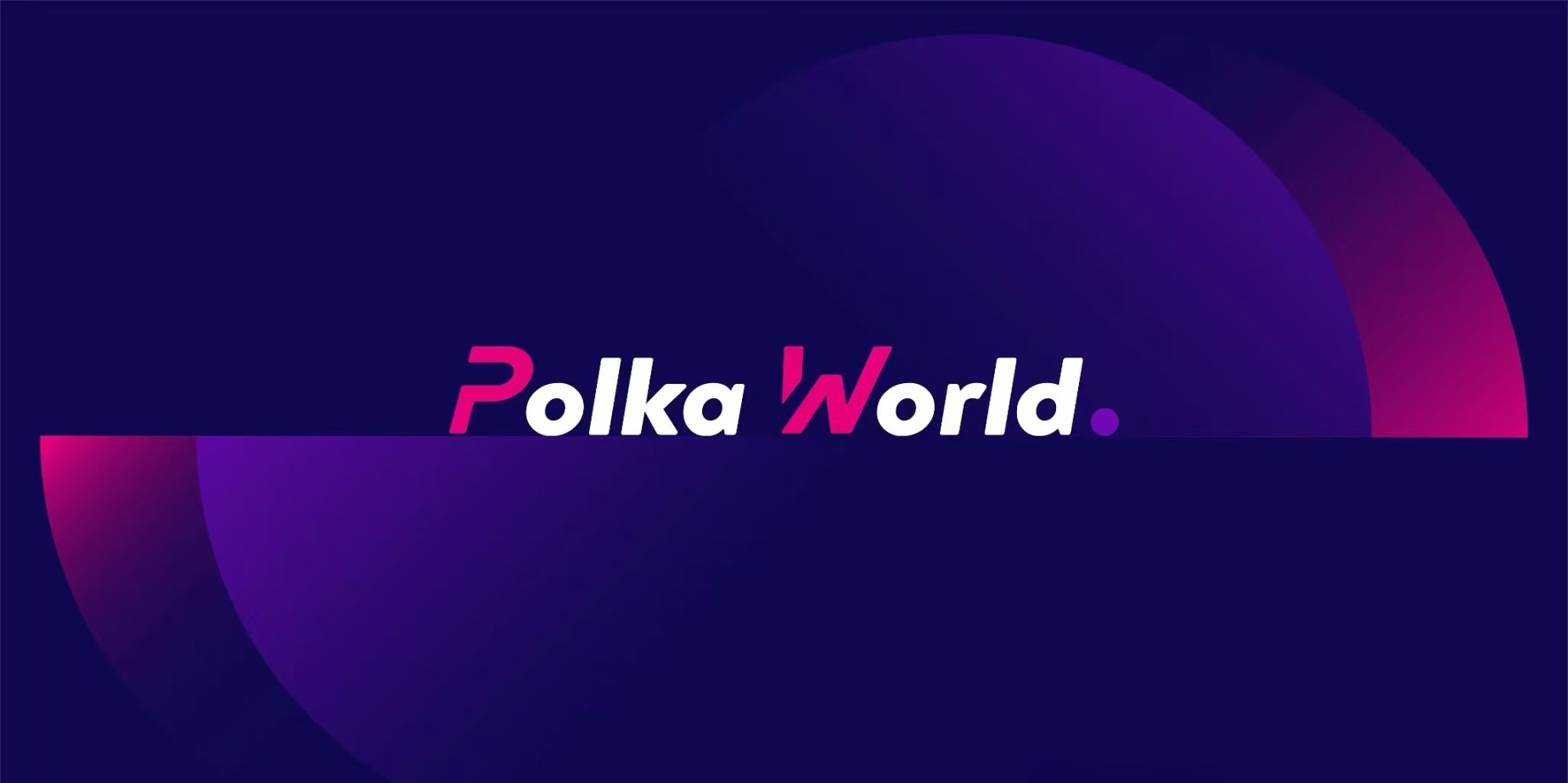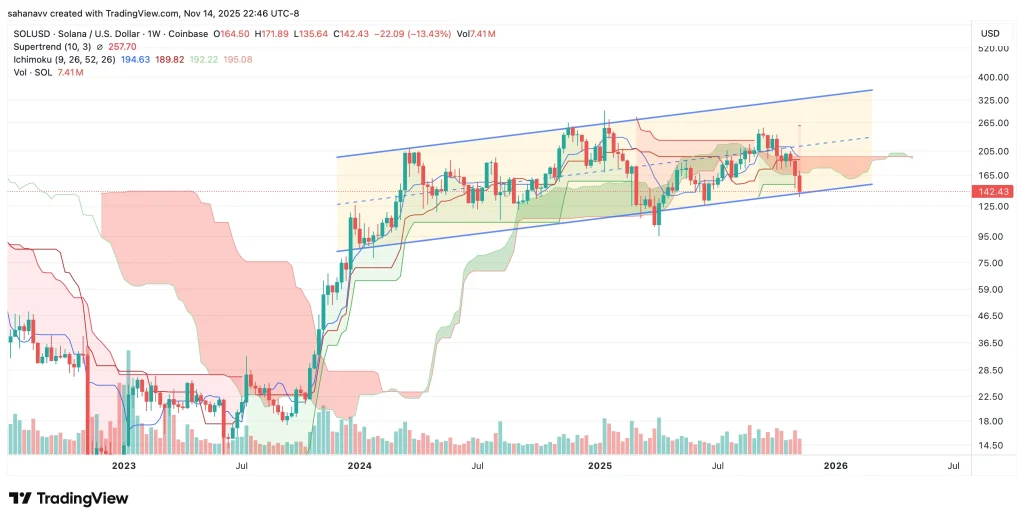Banking, Sports, and AI: Polkadot’s New Battleground in North America!

In the crypto world, some teams choose to grab attention with sensational partnerships, while others prefer to work steadily, turning technical advantages into truly sustainable growth. The Magenta Labs team, which helps the Web3 Foundation expand into the North American market, belongs to the latter group.
From Polygon to Polkadot, Magenta Labs has gradually found its rhythm: they are not just the ones sharing news on X, but are supported by the Web3 Foundation’s Decentralized Futures Program, taking on the task of driving ecosystem growth. Whether it’s expanding into the North American market or engaging in dialogues with enterprises like sports leagues and the music platform Mubert, their core focus remains—how to truly retain users, and even have them become part of Polkadot without realizing it.
In this Space Monkeys conversation, John Goldschmidt, Head of Growth at Magenta Labs, shared the team’s mission and approach:
- Why now is the best time to bet on North America;
- How to attract new users through sports, entertainment, AI, open finance, and other scenarios;
- And the dual strategy of Hub and Cloud.
More importantly, he also candidly pointed out the biggest challenge Polkadot faces—not the technology itself, but how to clearly communicate these values so that outsiders can understand and are willing to use them.
This is an in-depth exchange about growth logic and narrative challenges, and also a story showing how Polkadot is moving toward the mainstream.
- From Polygon to Polkadot: Magenta Labs’ mission and growth approach
- Fan economy + blockchain: Polkadot’s unique opportunity
- Magenta Labs brings Mubert into Polkadot
- Banking, sports, and AI: Polkadot’s new battleground in North America
- Polkadot’s challenge: how to articulate technical value
Keep reading for the full article!

From Polygon to Polkadot: Magenta Labs’ Mission and Growth Approach
Jay: The special guest of this episode of Space Monkeys is John Goldschmidt, Head of Growth at Magenta Labs. It’s a great honor to have you here, John, and welcome to your first appearance on Space Monkeys. Magenta Labs has made a strong impression—you entered the Polkadot ecosystem about nine months ago, right?
John: More or less, but actually it’s closer to a year—about 10 to 11 months.
Jay: I used to see you often sharing Polkadot news on X, and I wondered: Who are these people? Are they new content creators? What are they doing? Later, I found out that you’re working under the Web3 Foundation’s Decentralized Futures Program.
John: That’s right, it’s a grant program with milestone assessments.
I personally joined Magenta Labs three months ago, mainly responsible for expanding into the US market. As the US regulatory environment has become clearer this year, both the Web3 Foundation and the entire Polkadot ecosystem have noticeably increased their focus here.
So I joined Magenta Labs. Simply put, our responsibilities are:
- Assist the Web3 Foundation in advancing strategic projects,
- Drive ecosystem development,
- Establish connections among various ecosystem participants.
Our specific work includes: communicating with entrepreneurs, connecting with strategic partners, collaborating with large enterprises to drive real-world demand, and also helping coordinate different marketing activities to help parachain and other ecosystem participants grow better.
What we call “growth” is getting more wallets deployed on Polkadot, bringing more on-chain activity. The ultimate core metric is: how much real usage and activity can we create on-chain.
Before joining Magenta Labs, I was in charge of business development at Polygon. At that time, the team spent a lot of effort studying how to cooperate with enterprises and find the right application scenarios. The focus was not on flashy marketing, but on finding core use cases that could truly bring large-scale user activity and bring mainstream users into Web3.
Polygon often had big news back then, such as partnerships with Starbucks and Nike. Most of these collaborations were loyalty programs, but with a strong timeliness, looking more like marketing projects. Although they brought exposure and attention, we quickly realized that we needed more sustainable and sticky content.
After users enter the ecosystem, whether they are enterprises or retail consumers, they need a reason to stay for the long term. Many times, they may not even realize they are using Polkadot, but as long as the product is easy to use, they will naturally continue to stay.
Fan Economy + Blockchain: Polkadot’s Unique Opportunity
Jay: Within Magenta Labs, which types of enterprises are you mainly engaging with right now?
John: Our current focus is on the sports and entertainment industries. Some sports leagues and clubs in the US are very interested in blockchain, especially in how to use wallets and blockchain to enhance fan loyalty.
It’s important to emphasize that these clubs have their own clear KPIs and metrics. If the solutions we provide don’t fit their goals, they won’t adopt them.
While we love Polkadot, and we love crypto and Web3, and think these technologies are very attractive, for enterprises, the core question is always: Can it boost merchandise sales? Can it get more users to use their apps more frequently?
Fortunately, blockchain and crypto provide a modular framework, allowing them to plug into different applications at any time, without repeated verification or worrying about complex technical integration, because the underlying “tracks” are consistent.
They are gradually realizing this and seeing the huge blue ocean opportunity. So far, no one has really done this well—although there have been many attempts, I believe we have a chance to make it happen.
Jay: So when talking to enterprises or institutions about Polkadot, what points do you usually emphasize? How is it different from what you said when you were at Polygon?
John: Polkadot’s advantages mainly lie in: how transactions are executed, how gas fees are handled, and its unique scalability—these have not appeared elsewhere.
To be honest, I don’t want to make enemies or belittle Polygon. But at Polygon, it wasn’t easy to confidently explain how it differed from other networks and why to choose it.
But with Polkadot, it’s much easier. From the very beginning, its architectural design gave it unique and decisive features. We can confidently express these advantages, and as people’s understanding of the technology deepens, they will increasingly appreciate the value.
Magenta Labs Brings Mubert into Polkadot
Jay: What public achievements has Magenta Labs made?
John: A great example is Mubert, which launched earlier this year.
Mubert is a very cool music project that could have chosen many different directions, but we successfully convinced them to adopt Polkadot’s scalable technology advantages.
Mubert itself is an AI music and sound generation platform that has already been very successful in Web2: companies like Adidas use it, and major music producers use it as well. So even without Web3, their business could develop just fine.
But we still showed them that by doing royalty management on Polkadot, the platform could run more efficiently, more resiliently, and at lower cost.
And the most exciting part is: these use cases don’t exist just because of “crypto,” but because they make users’ lives simpler and better.
This is also something we need to constantly think about: are we just moving users from one “car” to another, or are we actually getting more new people on board?
I often say we need to “expand the tent” and attract more people to join. I think this atmosphere is forming in the Polkadot ecosystem. Especially in the North American market, we see many opportunities to bring in new users, which is also our current focus.
Banking, Sports, and AI: Polkadot’s New Battleground in North America
Jay: Why focus on North America now?
John: The core reason is the regulatory environment is becoming clearer.
From the beginning, Polkadot has insisted on a compliant path, not wanting to be involved with any tokens or frameworks that could be deemed non-compliant. But in the past, it was almost impossible to achieve this.
Now the situation is different. Although the relevant regulations have not been fully implemented, there are already many positive signals. For example, the Genius Act and the market structure bill both indicate that Polkadot can develop here legally and compliantly, and establish constructive relationships with regulators. This is crucial for the Foundation and the entire community.
Jay: So what are the key directions for the next 12 months?
John: We’ll focus on the following areas:
- AI and DePIN (Decentralized Physical Infrastructure)
- Entertainment industry, especially sports and music
- Popularizing wallets, whether for payments or identity management, as entry points for consumers into Web3
- Open Finance, which is different from traditional DeFi and focuses more on consumer-level scenarios like payments and identity
- Institutional applications, such as helping banks use Polkadot for asset tokenization and attracting clients
Overall, when we enter the market, there are indeed some players who have been deeply involved for years, especially many L2s, which have been communicating with regulators over the past few years. But from my conversations with institutions, I can feel that the opportunity is still huge—especially in making banks realize that Polkadot is their best choice for advancing asset tokenization and attracting consumers.
Jay: Will you focus more on Hub, or only on Cloud?
John: Actually, both. They are two parts of the product portfolio, each corresponding to different use cases.
In some cases, it makes sense to bring teams onto the Hub, especially those already building on EVM. For larger, more Web2-oriented use cases, and enterprises with existing user bases, we can help them access parachains or rollups more quickly and easily.
Having PDP (Polkadot Deployment Portal) as a resource is very important, and we hope to use it soon to support more deployments. Meanwhile, Hub is also a focus, especially as it will launch by the end of this year, and we hope it will drive more on-chain activity by then.
Polkadot’s Challenge: How to Articulate Technical Value
Jay: In getting people excited about Polkadot, what do you think is the main challenge?
John: First, as I mentioned before, everyone generally believes in Polkadot’s technical strength—this is undisputed. When people really dig in, they have no doubt about it.
But the challenge is: how to clearly communicate these advantages so that both ordinary users and technical people can understand.
For example, the coretime mechanism—how it brings faster, simpler scalability and ecosystem growth—the technology itself is strong, but it needs a more accessible way of expression. When communicating with institutions, we also need to highlight Polkadot’s high degree of decentralization and privacy protection capabilities.
In other words, we need to work harder on expressing and narrating the technical value.
Jay: John, I’m glad you could join our show. It’s really great to talk face-to-face with you about Polkadot’s development.
John: Thank you! I also enjoy this kind of exchange.
On site, you just have to call out, and people will come over. Some people already know about Polkadot, some know nothing about crypto. But when you explain Polkadot’s recent progress to them, their eyes light up and they get excited.
Some people will say, “I’ve been in crypto for many years, I’ve always liked Polkadot, and I’m glad to see you here.” Others will say, “I don’t know much about crypto, can you tell me about it?” And these people are often moved, realizing that Polkadot’s existence is meaningful and is an opportunity worth paying attention to.
This feeling is really cool.
Jay: Awesome! Thanks again for coming on our show!
Disclaimer: The content of this article solely reflects the author's opinion and does not represent the platform in any capacity. This article is not intended to serve as a reference for making investment decisions.
You may also like
SOL Price Dives Despite $370M ETF Inflows

Crypto Sell-Off Deepens Despite Expectations of Fed Rate Cuts
9 XRP ETFs to Launch in 10 Days, Franklin Templeton Leads Next Week’s Rollout
Solana Faces Critical Weekend Test as Bitcoin and Altcoins Wobble: Will SOL Price Regain $170?

